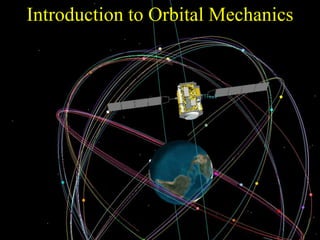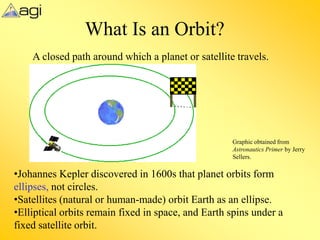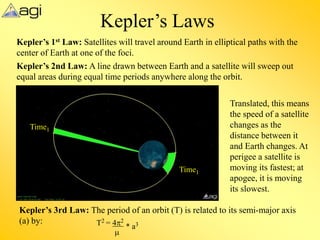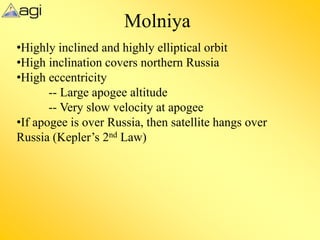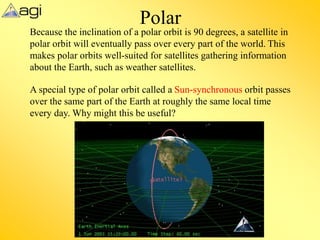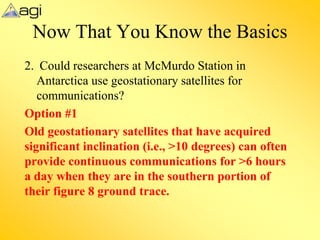Orbital mechanics describes the motion of objects in orbit around other celestial bodies under the influence of gravity. An orbit is a regular, repeating path determined by Kepler's laws of planetary motion. Orbital elements such as eccentricity, semi-major axis, inclination, and others are used to quantitatively describe the size, shape, and orientation of orbits in space. Different types of orbits like low Earth orbit, geostationary orbit, and Molniya orbit are suited for different purposes like Earth observation, communications, and coverage of high latitude regions.
